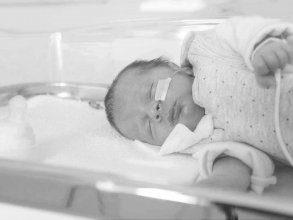In neonatal care, the delicate nature of patients demands meticulous attention to every aspect of their well-being. The placement of a peripherally inserted central catheter (PICC) in neonates, while essential, presents a significant challenge due to the fragile and complex nature of the patient. Beyond the needle stick, this procedure involves distressing elements such as tourniquet application, vessel distention, and extremity hyperextension. Consequently, a prolonged episode of acute pain ensues. It is exacerbated by subsequent steps like catheter threading, X-ray procedures, and site dressing.
Acknowledging these challenges, it is imperative to address the issue of pain management during neonatal PICC placement to ensure both immediate comfort and long-term well-being.
The impact of unmanaged pain on neonatal development:
Coughlin’s insights underscore the profound developmental trauma experienced by neonates and their families upon NICU admission. The psycho-emotional repercussions of unmanaged or undermanaged pain during medical procedures can cast a lifelong shadow. They affect not only the immediate biological response but also the infant’s holistic maturation, growth, and recovery. Therefore, a comprehensive approach to pain management becomes not only a medical necessity but also a moral and ethical imperative (Coughlin, 2014).
Recognizing the complexity of pain in neonatal PICC placement:
Drawing a parallel between PICC placement and feeding tube insertion, where even shorter acute procedures elicit significant pain responses, highlights the gravity of the situation. PICC placement involves a more intricate process, necessitating more proactive and assertive pain management strategies. While the need for pain control is evident, it’s essential to consider the potential hesitation that may arise due to categorizing pain medication administration as moderate sedation, as per institutional guidelines (Caughlin 2017, AAP 2016).
Recommendations for Holistic Pain Management:
To ensure optimal pain management during neonatal PICC placement, a multi-faceted approach is recommended. Collaborative efforts between inserting clinicians and the NICU team are crucial to determining appropriate pharmacological interventions. When pain medication is not initially prescribed, integrating existing medications such as fentanyl or a versed drip, supplemented by additional boluses, can effectively mitigate pain throughout the procedure.
Alongside pharmacological interventions, developmental techniques should also be employed. Swaddling and covering the infant’s eyes, in alignment with recognized best practices, serves to alleviate stress and contribute to a more manageable experience for these tiny patients (NANN 2015).
Addressing Concerns and Encouraging Collaboration:
Apprehensions surrounding moderate sedation can be eased by understanding institutional and national accreditation guidelines. By adhering to prescribed medication dosages and focusing on the lower end of therapeutic ranges, minimal sedation can be achieved while effectively managing pain.
The Role of the NICU Nurse:
In the realm of neonatal care, the NICU nurse stands as the advocate for these pre-verbal and vulnerable patients. It is their ethical duty to ensure appropriate pain management and the implementation of best practices to minimize pain and trauma. Given the inability of neonates to express their discomfort and the limited awareness of parents regarding procedural nuances, the nurse assumes a pivotal role in vocalizing the patients’ needs and concerns.
Conclusion:
In conclusion, the imperative to address pain during neonatal PICC placement cannot be overstated. This comprehensive approach, encompassing pharmacological interventions, developmental techniques, and collaborative efforts, stands as a beacon of care and compassion in the realm of neonatal medicine. As caregivers entrusted with the well-being of these fragile patients, it is incumbent upon every clinician to rise to the challenge of addressing pain and trauma associated with PICC placement. By implementing these strategies and embracing evolving techniques and technologies, we pave the way for improved procedural success and, more importantly, enhanced comfort and well-being for our neonatal patients.
References:
– National Association of Neonatal Nurses, Peripherally Inserted Central Catheter: Guideline for Practice, 3rd Edition. Chicago, IL: National Association of Neonatal Nurses;2015.
– Coughlin, M. E., (2014). Transformative Nursing in the NICU, Trauma-Informed Age-Appropriate Care. New York, NY: Springer Publishing Company, LLC.
– American Academy of Pediatrics (AAP) Committee on Fetus and Newborn & Section on Anesthesiology and Pain Medicine. (2016). Prevention and management of procedural pain in the neonate: An update. Pediatrics, 137(2), e20154271.
– Coughlin, M. E., (2017). Trauma-Informed Care in the NICU, Evidence-Based Practice Guidelines for Neonatal Clinicians. New York, NY: Springer Publishing Company, LLC.




